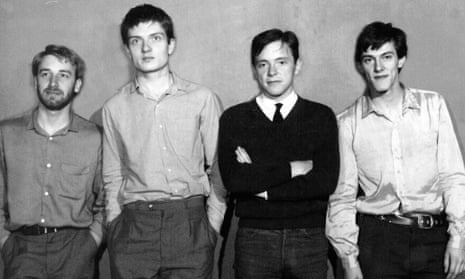Manchester, UK – The legend of Joy Division as post-punk pioneers is undisputed, their spectral sound and Ian Curtis’s haunting lyrics forever etched into the annals of music history. But what if the “echoes of the unknown” were more than just artistic expression? What if, buried deep within the annals of Factory Records and the private archives of the band members, lay evidence of a far more sinister purpose: a deliberate, almost scientific, crafting of sound designed not just to evoke emotion, but to subtly control the listener?
A groundbreaking, and frankly terrifying, new exposé titled “The Curtis Code: Joy Division’s Sonic Subversion” is set to shatter the romanticized myth of the band, alleging that their iconic sound was not merely an organic evolution, but a meticulously engineered “sound weapon” intended to influence public mood and, some shocking claims suggest, even induce specific psychological states.
The bombshell claims center around a cache of recently unearthed audio tapes and handwritten notes, purportedly belonging to Ian Curtis and the late Factory Records founder, Tony Wilson. These documents, according to the documentary’s anonymous “deep throat” source, reveal detailed schematics of frequency manipulation, rhythmic patterns designed to mirror neurological impulses, and lyrical structures intended to bypass conscious thought, planting seeds of unease, melancholy, and a pervasive sense of existential dread.
“It wasn’t just about making good music,” states a blurred figure identified only as a “former Factory insider” in the chilling trailer for “The Curtis Code.” “Ian was obsessed with the power of sound, how it could affect the human psyche. He read everything he could get his hands on – psychology, obscure Eastern philosophies, even early works on subliminal messaging. He wasn’t just writing songs; he was conducting experiments.”
The documentary reportedly features analyses by rogue acoustical engineers and psychologists who claim to have identified specific sonic elements within Joy Division’s most iconic tracks – from the unsettling bassline of “Disorder” to the hypnotic pulse of “Transmission” and the stark emptiness of “Atmosphere” – that correlate with known methods of psychological conditioning. The heavy use of reverb and delay, previously considered atmospheric, is now posited as a deliberate technique to disorient and create a sense of isolation, making the listener more susceptible to the lyrical content.
Perhaps the most disturbing revelation is the suggestion that Ian Curtis’s own struggles with epilepsy and depression were not just influences on his art, but were, in part, exacerbated by his relentless pursuit of these “sonic manipulations.” Some theories put forth in the film even hint at the possibility that the band, particularly Curtis, became unintended victims of their own powerful creation, trapped within the very soundscape they had so painstakingly constructed.
While critics have always acknowledged Joy Division’s profound impact on music, shaping the desolate soundscapes of post-punk and influencing countless artists, “The Curtis Code” threatens to reframe their legacy from artistic pioneers to unwitting, or even knowing, architects of a grand psycho-sonic experiment. Was their music a cathartic expression of the human condition, or a chilling precursor to a world where sound itself could be weaponized?
The music world is bracing for impact. If even a fraction of these claims prove true, the echoes of Joy Division will no longer be merely those of a band that shaped a genre, but of a dark, resonant force that, unbeknownst to millions, was subtly bending the very fabric of our minds, forever changing not just the sound of rock, but perhaps, the nature of listening itself.

